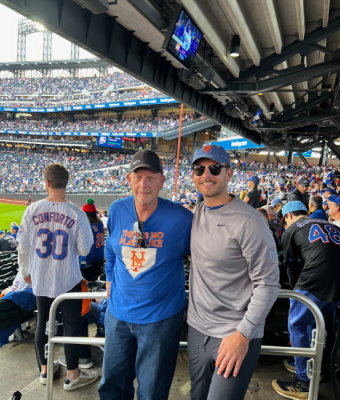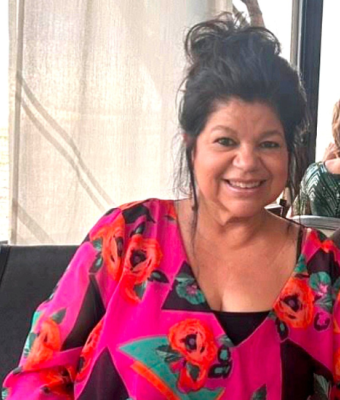My PD Story
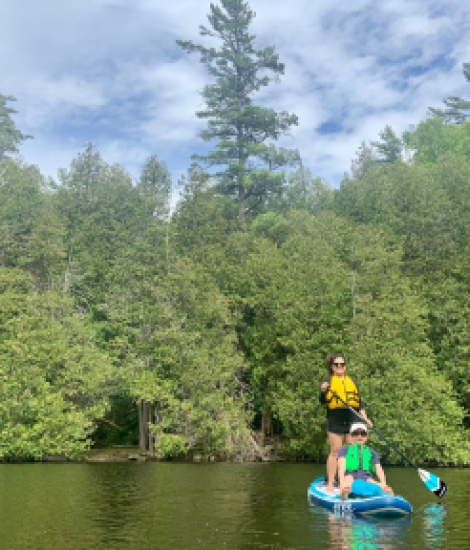
Carla Velastegui
Since she was 15 years old, Carla Velastegui has been a primary care partner for her mom, Gina, who was diagnosed with Young-Onset Parkinson’s disease (YOPD) in her mid-40s.
“Caregiving is very much at the core of who I am,” Carla said. “Helping my mom manage her Parkinson’s has been a constant throughout much of my life. When I was younger, people were always shocked that I was taking on caregiver responsibilities. That’s why I’m passionate about raising awareness and addressing the complex challenges caregivers face in their communities, workplaces and healthcare systems while caring for their loved ones.”
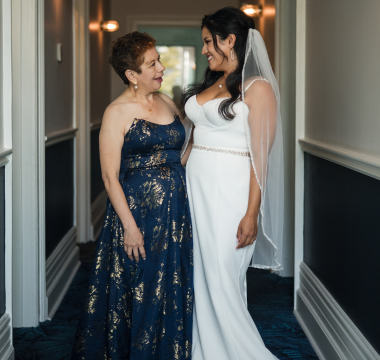
When her dad took on the role as sole provider for the family, Carla naturally became the person who accompanied her mom to doctor appointments. She would translate for her mother, whose primary language was Spanish, ensuring she fully understood and engaged with her care plan, and provided support for continuity of care. Doctors frequently questioned her involvement in her mom’s care, which has made Carla passionate about advocating for caregivers, especially young caregivers.
"It’s extremely important that young caregivers are acknowledged, supported and valued by providers, especially for immigrant communities where language barriers exist,” she said. “We need to ensure quality and continuity of care, especially when caring for someone with a chronic disease like Parkinson’s.”
Read Carla's story in Spanish now
We believe in empowerment through education for the PD community, through English and Spanish resources.
Now, Carla splits caregiving with her dad, who was able to retire early. But throughout the early and mid-stages of her career, she balanced her mom’s care alongside building her own path. Carla started her career in digital health working with early-stage startups. She loved the work and found it exciting, but the challenge of maintaining a healthy work/life balance combined with a lack of structured support for caregivers, prompted her to seek a role in a different sector — one that offered better resources for her professional growth and evolving caregiving responsibilities.
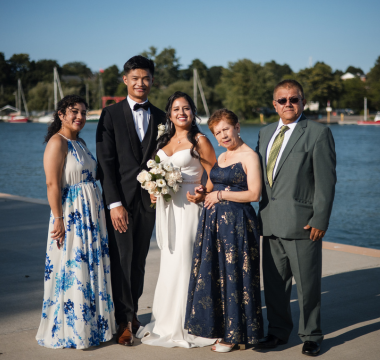
Through these experiences, Carla developed a passion for leveraging technology to enhance care coordination and broaden the reach of care, creating a seamless continuum of care for patients and their circle of care. “I'm always exploring how technology can support caregivers like me and people living with Parkinson’s — whether it's by offloading tasks, centralizing information or simplifying care management. Technology helps me manage my mom's needs more effectively and focus on what truly matters — providing compassionate care.”
Alongside her caregiver duties, Carla continues to find ways to be a supportive partner and friend to those in her network of care and support. “Having open conversations with my partner and my friends about what is required of me as a caregiver has been important,” Carla said. “Sometimes I need more flexibility with plans because my mom’s care situation can change unexpectedly. I’ve also learned how to communicate more effectively about what supports I need from those around me. I can’t do this alone.”
Being transparent with her parents about expectations and plans has been key as they navigate Parkinson’s care for her mom as a family. But it has not always come easy, Carla said, and she recommends people who are newly diagnosed take the time to discuss finances and things that might come into play later, like moving to a home that can better accommodate Parkinson’s symptoms.
“When you first get a diagnosis, you may feel overwhelmed and scared,” she said. “It might feel hard, but talking about the future early on is important. Looking back, I wish we had those discussions earlier, so we had more time to plan and prepare for things like my dad retiring early or my parents downsizing. Conversations like this have also been important for me as I think about planning for my own future, so I can balance supporting my mom and continue working towards pursuing my own goals without resentment building or feeling like my life was paused.”
Carla also learned that taking time for herself is essential to avoid burnout. A few years ago, she hit a breaking point and began dedicating time each week to unwind and do something she enjoys.
“Realizing that my wellbeing is just as important has been an essential lesson,” she said. “Making time for therapy and hobbies like hiking and paddleboarding where I can disconnect have been so helpful. I remind myself that if I’m not well, mentally, emotionally and physically, then I’m not able to take good care of my mom.”
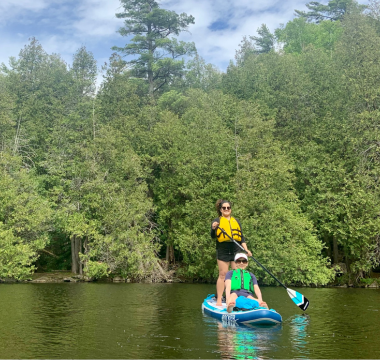
Advocating for caregivers is a driving force for Carla. She is involved with Toronto Western Hospital, a Parkinson’s Foundation Center of Excellence where her mom receives care, and a member of the Parkinson’s Foundation People with Parkinson’s Advisory Council, where she is one of two adult children who help a parent with Parkinson’s.
Connecting with the Parkinson’s Foundation has offered a major source of support for Carla as a care partner. She regularly references Parkinson.org for guidance, especially as symptoms evolve and the condition progresses. The Foundation’s Spanish resources have been lifechanging for her mom, who feels like she can take more control over her Parkinson’s when she can read helpful articles and watch videos in her own language.
“With Parkinson’s, every day is a new, unique day, and some are more challenging than others for my mom and for me as her care partner,” she said. “It can be hard to balance everything, especially while managing a full-time job and working toward personal dreams and milestones. A dream of mine is to one day have workplaces and healthcare settings recognize caregiving the way they are more prevalently recognizing parental leave. Until then, I’ll keep advocating and doing everything I can to raise awareness and make that vision a reality.”
For more tips on navigating the care partner journey, visit Parkinson.org/Caregiving.
For information and resources in Spanish, visit Parkinson.org/Espanol.
Related Materials
Pain in Parkinson's Disease
Occupational Therapy and PD
Nutrition and PD
More Stories
from the Parkinson's community
